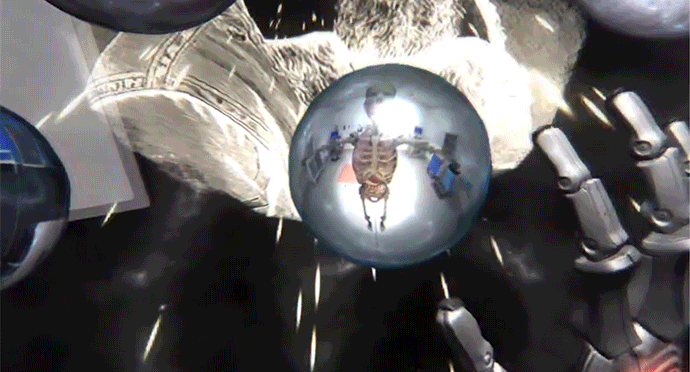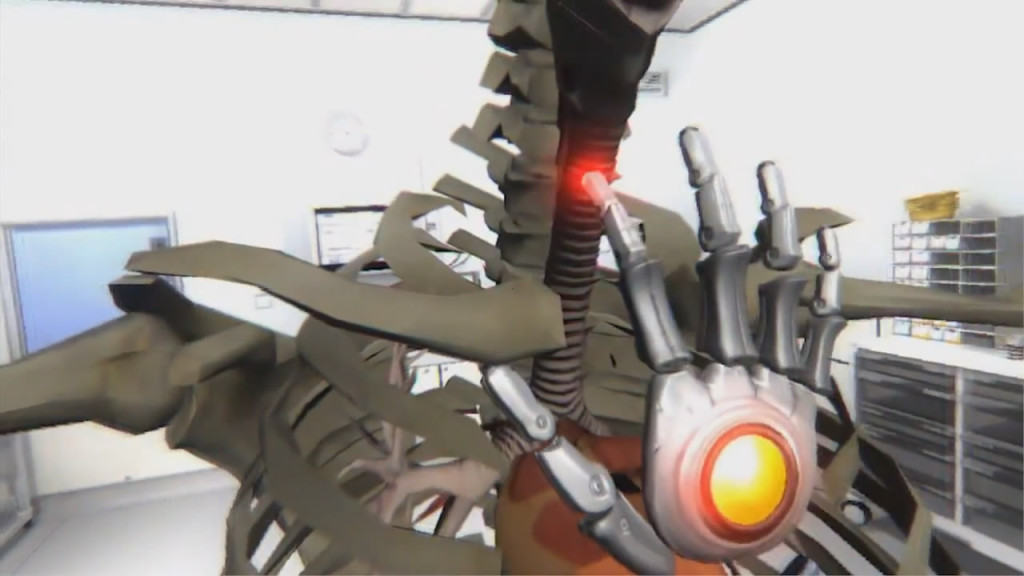Over the next several weeks, we’re spotlighting the top 20 3D Jam experiences chosen by the jury and community votes. These spotlights will focus on game design, interaction design, and the big ideas driving our community forward.
Tomáš Mariančík wants to change how people learn about the world and bring their ideas to life. While his World of Comenius demo earned third place, it’s just the start of a much larger project – a global online platform that opens up new possibilities for exploration, discovery, and creativity. You can download the Windows demo free for the Oculus Rift: frooxius.itch.io/world-of-comenius.
Outside of academic circles, the father of modern education doesn’t get much name recognition. What does it mean for you to name the platform after him?
 Even though many people don’t know who John Amos Comenius was, he probably had quite a large impact on their lives – as he was one of the very first innovators of education. Many of his ideas seem progressive even now, over 350 years later!
Even though many people don’t know who John Amos Comenius was, he probably had quite a large impact on their lives – as he was one of the very first innovators of education. Many of his ideas seem progressive even now, over 350 years later!
Comenius was born a Czech, but from our little country he traveled over the world (well, mostly Europe) and spread his ideas about education, becoming known as “teacher of the nations.” In the age of “learning” by rote memorization of Latin passages from books for the rich and privileged, he suggested that education should be accessible to anyone, regardless of wealth, social position, or gender. And instead of rote memorization, we should focus on understanding.
He also came up with a concept of “school by play,” learning languages by re-enacting various scenarios in a theatrical play where the language was used. Besides making one of the very first children’s encyclopedias and textbooks with pictures, he was also a proponent of lifelong education – not something you finish, but something anyone can do to enrich their lives.
Our goal is to spread this platform to the whole world, giving people new ways to learn and pushing Comenius’ ideas even further. And who knows, maybe he’ll get some more name recognition soon!

What does VR have to offer education “in the third millennium”?
Personal education. A large world, where you can travel to any scale, any time period, and any place you want. Exploring what you want to explore, not because you have to, but because it’s fun. Virtual reality allows us to create experiences that wouldn’t be possible in the real world, so you can play around inside of a cell, observing how its biochemistry reacts to little changes you make (like a sandbox game, but based on facts!) or manipulating things at a quantum level.
VR also allows us to bring people together – of all ages and all over the world, thanks to the power of the Internet. People of different ages and skills interacting can learn a lot more from each other than a class of kids sitting in a room and being only at the receiving end of the interaction.
Finally, I think VR will bring access to education to a lot of people. Probably not right away, because it’s not yet widespread enough (or even ready), but the same was once true for the personal computer or the Internet. And if you look at the surge of VR devices, whether cheap or expensive, I think it’s going to spread sooner than later.
Even now, almost four centuries later, we can look at Comenius’ ideas and see how the world is still only slowly changing. I want to do what I can to show people that learning can be a fun and enriching experience (if you’re not forced to study something you have no interest in, that is). Understanding the world around us better is not only beautiful, but gives you the power to make your own world.

What’s the connection between education and the power to create?
Education gives you the best possible tools to build and shape your ideas – sort of a bridge between your imagination and reality, giving you ways to transform the former into the latter. Our brains are essentially association machines, creating links between various pieces of information and sensory stimuli.
The richer and more intertwined web of meaningful associations you build, the more you’ll make connections in things you perceive or think. You’ll recall various ideas from electronics, physics, or mathematics that can be used to construct that idea – and these will in turn fire up more and more associations, lighting up the neural pathways like a reaction chain of fireworks.


World of Comenius experiments with navigation using portals and the ability to grab 3D space. Can you speak to the challenge of 3D VR navigation?
It’s a definitely challenging part to design. You essentially have two opposing forces: the need to go around the environment and explore, and your stomach pushing its contents upwards the moment you see a motion but don’t feel it. A very important thing is to make the interactions as natural as possible, so our brains can interpret it reasonably well.
I’ve used grabbing and moving with your hand with 1:1 mapping at the moment for small-scale movements. This mimics the way you would move around when weightless – by grabbing some solid handle, and then pulling or pushing your arm so you move your body relative to it. This allows quite precise position adjustments. Having your hand as a reference point in your field of vision seems to help with nausea as well. For the full version, you’ll see more methods to get around, most probably a hi-tech floating chair with personal HUD.

Your work has a lot of unique visual touches, like the red glowing light that appears when your hand intersects an object. How do you develop these visual elements?
Like everything else! Design it conceptually first and then implement it – in this case with shader code and camera post processing effect (for the glow). The conceptual idea behind this is fairly simple. Since there’s nothing to stop your hand from going through an object in the scene, making it clip through and look bad, I instead came up with the narrative that the objects are like holograms. The glow effect is because they’re breaking up around that area. You can still stick your hand through them, but now it at least makes a little more sense visually.
What will World of Comenius look like in the future?
Quite a lot bigger! The 3D Jam demo uses only a fraction of the design for the whole project and a lot of quick code written specifically for the jam (which will ultimately get thrown away in favor of a more robust system). World of Comenius is going to allow you to both consume educational experiences and create them – a world where anyone can be both student and teacher and share their work with the community.
Communities can achieve quite incredible things when given the right tools and direction to get them started, and that’s what WoC aims to do. Give people the means to easily construct new experiences focused on education and science – not only to learn, but also to share their new ideas and communicate about them with others. A proper infoverse.
For example, it’s often helpful to sketch ideas on a whiteboard or paper when trying to explain them to someone. But you’re limited by two dimensions and simple tools. In WoC you’ll be able to sketch a 3D scheme or geometry to others, in real time, even if they’re halfway across the world.
That’s actually the reason behind the first part of the name, as it’s meant to be a world of experiences that will grow and expand thanks to the work of the community. There are many talented people out there who are very good at teaching others and helping others understand new things. WoC will give them tools to create compelling educational experiences, and a platform where they can share their work with the whole world – making the best of the best education accessible to anyone.

How do you think VR will transform the face of education? Share your thoughts with Tomáš on Twitter @Frooxius.





[…] World of Comenius by Tomáš “Frooxius” Mariančík includes a 3D painting component as well as a sandbox with discrete building blocks for creating spaces as you inhabit them. […]
March 13, 2015 at 9:25 am[…] on the original human operating system: your hands. Whether you’re giving people the power to grab a skeleton, reaching into a human heart, or teaching anyone how to program, hands are […]
October 20, 2015 at 9:20 am[…] on the original human operating system: your hands. Whether you’re giving people the power to grab a skeleton, reaching into a human heart, or teaching anyone how to program, hands are […]
January 7, 2018 at 11:24 pm